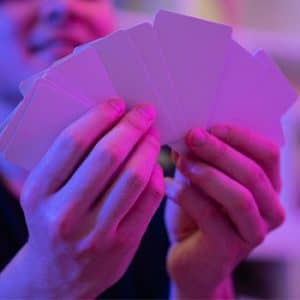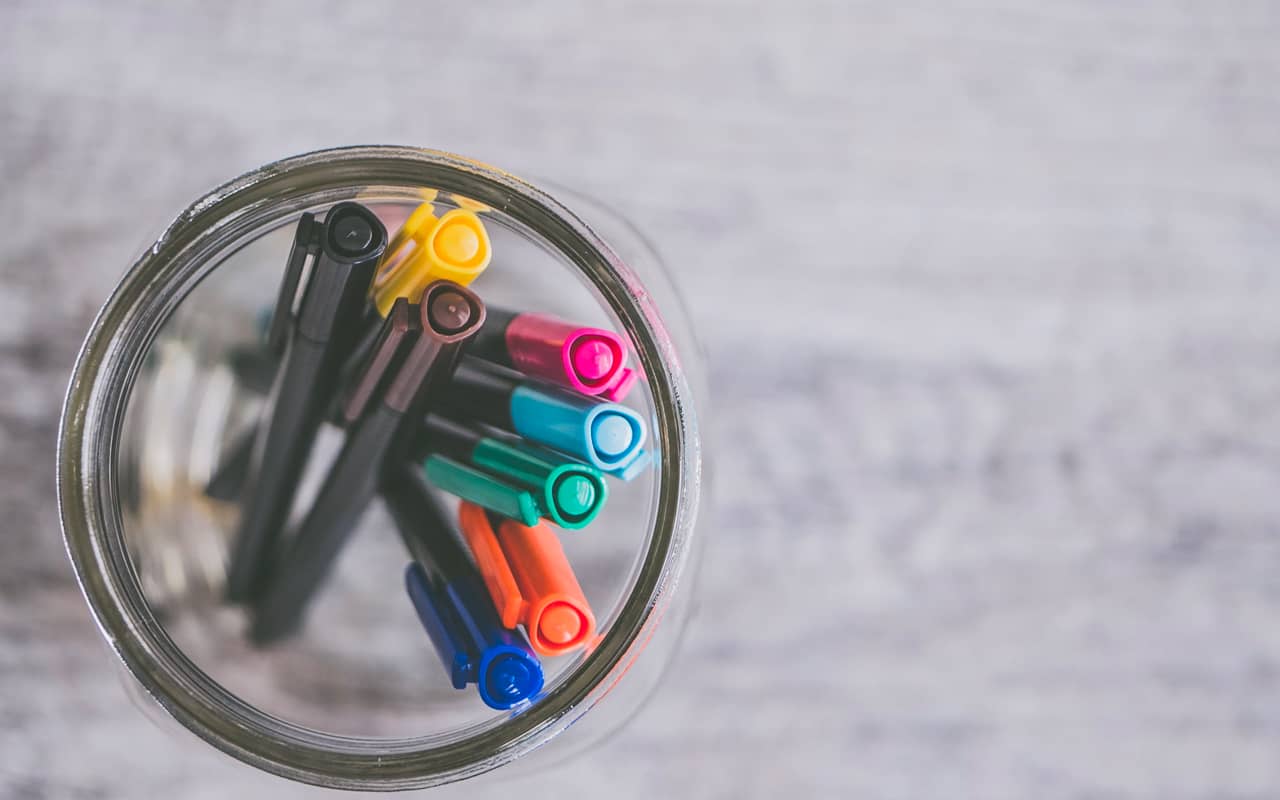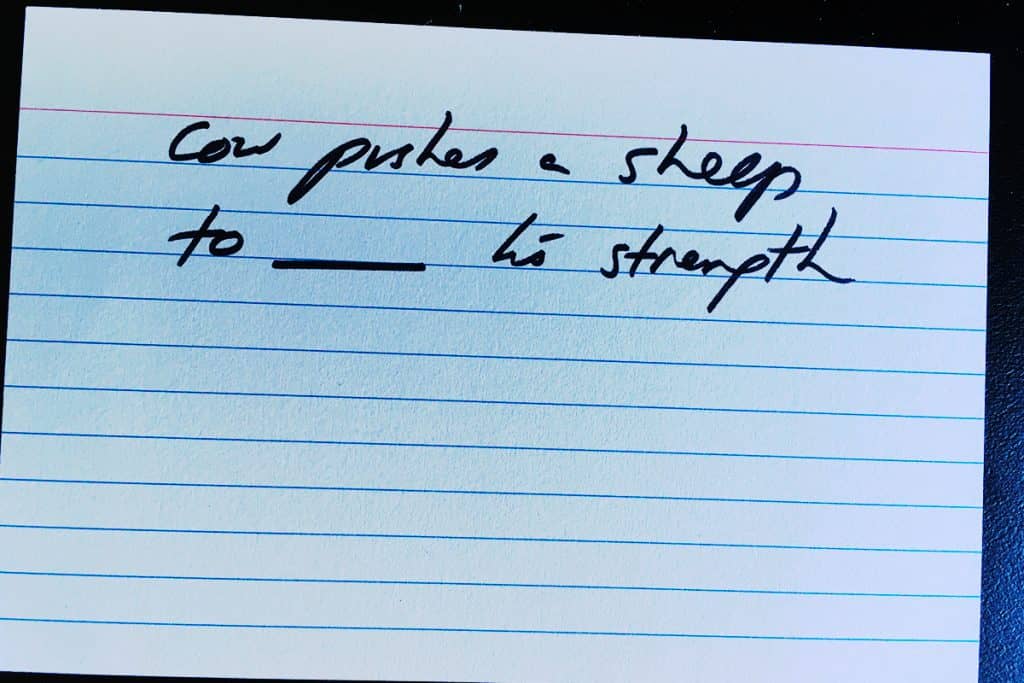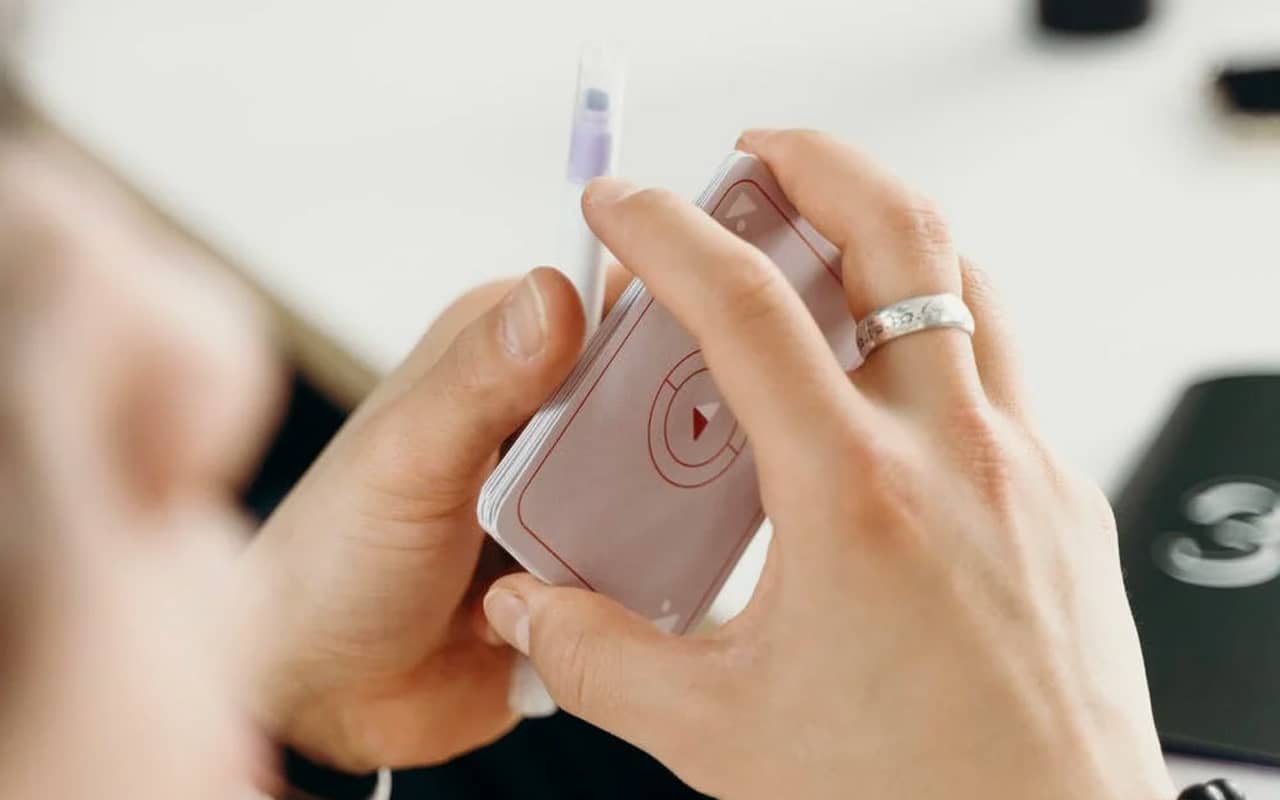Przejdź do trybu offline z Player FM !
How to Memorize Flashcards Fast (From Someone with a Ph.D.)
Archiwalne serie ("Kanał nieaktywny" status)
When?
This feed was archived on February 19, 2024 00:56 (
Why? Kanał nieaktywny status. Nasze serwery nie otrzymały odpowiedzi od kanału przez zbyt długi czas.
What now? You might be able to find a more up-to-date version using the search function. This series will no longer be checked for updates. If you believe this to be in error, please check if the publisher's feed link below is valid and contact support to request the feed be restored or if you have any other concerns about this.
Manage episode 318669415 series 1375140
 The best way to study flashcards is not to study them at all.
The best way to study flashcards is not to study them at all.
Now, before you bounce away, hear me out.
There’s a small set of techniques that make learning with flashcards so fast, you really won’t feel like you’re studying at all.
Instead, you’ll feel like you’re creating the knowledge you want to learn.
Isn’t that exciting?
I’ve been using cards for decades and spent hundreds of hours experimenting to find out how to memorize flashcards effectively.
I’ve used them to help me learn languages and get my Ph.d.
And on this page, I’ll share with you the best tips I’ve discovered along the way.
Ready?
Let’s dive in.
How to Memorize Flashcards Effectively: 10 Proven Tips
There are a small number of steps to follow.
They’re easy to learn, but let’s not beat around the bush.
What I’m going to share may feel counterintuitive at first.
You probably won’t be used to thinking or learning in these ways.
To get comfortable with the approach, you just need to practice. Seeing me talk about some of my own flashcards will also help.
https://www.youtube.com/watch?v=b6HrJCWygmg
Now here’s more information on how to set yourself up for success.
Step One: Identify The Main Points And Subpoints
Before you start making flashcards or committing them to memory, it’s important to have a strategy for identifying the main points.
Often, your study material is loaded with clues. Knowing how to analyze your information sources is key, so be sure to learn how to memorize a textbook effectively.
Step Two: Use The Right Sized Flashcards
Typically, 3×5 is a good size. It helps you focus on recording just the key points.
However, you may need to experiment first with a few different sizes. Use discernment and your own experiments to find out what sizes are best for you.
And don’t hesitate to use different sized flashcards for different kinds of learning projects.
Also, keep in mind that you can always photograph cards of any size and import them into a spaced-repetition software like Anki.
Step Three: Use Multiple Colors
Nothing limits your imagination like using just one color.
I try to always use at least 3 colors in each of my cards, a tip I learned from memory expert Tony Buzan.

Making sure your flash cards have multiple colors is a key strategy for engaging your brain and amplifying the learning process.
Not only does using multiple colors make the card creation process more interesting. It also makes looking at your cards later much more engaging.
Step Four: Integrate Words And Drawings
When learning how to study with flashcards, it’s easy to get stuck on using words.
However, even with limited artistic skills, it’s important to incorporate images as much as you can.
Even the simplest of sketches will help you with the next tip. I sometimes joke that my drawings look more like chicken scratches. But all that matters is that I can recognize my images the few times I need to look at them to start establishing the desired memories.
Step Five: Create Puzzles For Your Brain To Solve
The number one problem people face when using flashcards is rote repetition. This is when they use the cards to repeatedly expose themselves to the information.
That is no fun!
Instead, use keywords, images and even empty spaces to give your mind the opportunity to fill-in-the-blanks.
Let’s talk about the empty space principle in a bit more detail.
This simple flashcard creation strategy lets you harness the power of active recall.
For example, on this card for the Mandarin word Měishù guǎn or art gallery, there’s a line instead of an image for the guǎn sound.

Notice the three colors in this flashcard example and how the blank space stimulates the use of active recall for rapid memory formation.
When looking at the card, I know it’s my job to press my imagination for a solution. Although it might seem uncomfortable, it’s the stretch that helped me pass my Chinese test with flying colors, including the Chinese characters. I was happy because I was able to reach almost as many words that are needed for basic fluency in this language.
We’ll talk more in a minute about how we use our imagination, but for now, make use of this principle as often as you can. It’s powerful.
Step Six: Leave The Opposite Sides Blank As Often As Possible
Many people will be reluctant to do this in the beginning, but it is a very strong learning strategy I recommend you experiment with as soon as you feel confident.
Including the answers on the back of your flashcards is problematic because it leads to cheating. When you know you can just glance at the answers, you’re tempted to simply look at it instead of trying to generate the answer from memory.
This is a huge problem because it leads you into the memory-destroying boredom of rote learning.
As you build up to using flashcards as puzzles your mind has to solve to reinforce what you’re learning, try using the principle of blank spaces.
For example, on this card for the word Kǎoshì or test/exam, multiple colors have been used (black, white and pink).

The front side of the card uses images alone to help the mind solve the puzzle.
On the backside of the card, notice how the blank space creates a puzzle to be solved, avoiding the horrible boredom of rote reptition:

The backside of the flashcard uses active recall to stimulate faster absorption of the target information into long term memory.
Although this procedure lessens the challenge of recalling the word from pure imagery, you may adding words with a fill-in-the-blanks approach useful in the beginning as you build your flashcard mastery.
Step Seven: Use Your Multisensory Imagination
Although flashcards focus a lot on our hands and eyes, we don’t want to leave out our imagination.
As you create your cards and the associations that will help you remember definitions and key terms, include at least these sensations:
- Kinesthetic
- Auditory
- Visual
- Emotional
- Conceptual
- Olfactory
- Gustatory
- Spatial
Here’s an example of what I mean.
The Měishù guǎn example pictured above and discussed in the video included with this post is not just a picture of Aunt May, some shoes, a blank space and some art in a gallery.
In my mind, I am physically feeling Aunt May kick a boot at my image for guǎn, which is a musical group called Gwar.
I can hear the sound of the boot hitting them and see them getting angry. I experience their anger and conceptualize their plans for revenge. They are going to burn all the art in the art gallery, which allows me to imagine the smell of fire and the taste of soot in my mouth.

As you work with your flash cards, imagine each image larger than life. You can project them on the walls of a Memory Palace for even better and faster learning outcomes.
I also take a second to imagine how big everything is and exaggerate the sizes. Combined, all of this multi-sensory association and visualization exercise makes the learning process so much faster.
Step Eight: Use Questions As You Study Your Flashcards
Rather than passively move through your cards, actively ask questions in order to study more effectively.
If you don’t, it’s easy to get frustrated.
My favorite question is, “What is this image trying to tell me?”
Then I focus on the clues and work it out verbally.
It’s important to get your mouth involved in order to help you harness the levels of processing effect.
In addition to speaking and answering your cards out loud, you can also keep a memory journal. Doing so will deepen your brain’s processing of the learning material even further.
Step Nine: Follow A Consistent Schedule
To memorize flashcards effectively, you need to reduce repetition by following all of the steps outlined above.
But none of us can reduce repetition entirely.
For best results, go through your cards in small, reasonably sized sets. I prefer 10-20 sets at a time.
Then, craft a schedule based on a pattern like:
- 5x daily for the first 5 days
- 1x daily for the first 5 weeks
- 1x monthly for the first 5 months
But that time, you should have everything in long term memory that will in many cases last for life.
If you want to speed up the process, consider also using a Memory Palace.

Each card can be “cross-indexed” with a Memory Palace. I often number my flash cards to help keep track of where in a particular Memory Palace they have been encoded.
Step Ten: Experiment With Additional Techniques
As powerful as flashcards can be, I don’t recommend using them in isolation.
Instead, consider combining them with the Memory Palace technique and mind mapping.
A powerful way to add your cards to a Memory Palace is to simply number them. Then, place a version of each association on your cards at a Magnetic Station in your Memory Palace for that number.
In other words, the fifth card’s information goes on the fifth station of its Memory Palace.
When it comes to mind mapping, I highly recommend reading Mind Map Mastery and checking out the work of Phil Chambers and Marek Kasperski.
Memorize Flashcards Fast
Today’s suggestions will serve you well, so please explore them systematically.
But it’s also important to experiment.
When ideas come to mind, give them a try.
Seriously.
I’m aware of no “Flashcard Police” anywhere on the planet.
Also, put aside your fears of wasting time or failure.
Mistakes will be made, but experimenting with new learning techniques and your ideas cannot waste time.
You will only learn new things that help speed your progress. The only waste that happens is when people let the fear of trying new things stand in their way.
And if you like trying new things and learning to put fear aside, check out my FREE Memory Improvement Kit:
In it, you’ll learn to use even more memory techniques than we’ve discussed today. These memory hacks are fast, fun, effective and always like a game.
So what do you say?
Are you ready to take your flashcard game to the next level?
Give it a go and enjoy the learning journey!
488 odcinków
Archiwalne serie ("Kanał nieaktywny" status)
When?
This feed was archived on February 19, 2024 00:56 (
Why? Kanał nieaktywny status. Nasze serwery nie otrzymały odpowiedzi od kanału przez zbyt długi czas.
What now? You might be able to find a more up-to-date version using the search function. This series will no longer be checked for updates. If you believe this to be in error, please check if the publisher's feed link below is valid and contact support to request the feed be restored or if you have any other concerns about this.
Manage episode 318669415 series 1375140
 The best way to study flashcards is not to study them at all.
The best way to study flashcards is not to study them at all.
Now, before you bounce away, hear me out.
There’s a small set of techniques that make learning with flashcards so fast, you really won’t feel like you’re studying at all.
Instead, you’ll feel like you’re creating the knowledge you want to learn.
Isn’t that exciting?
I’ve been using cards for decades and spent hundreds of hours experimenting to find out how to memorize flashcards effectively.
I’ve used them to help me learn languages and get my Ph.d.
And on this page, I’ll share with you the best tips I’ve discovered along the way.
Ready?
Let’s dive in.
How to Memorize Flashcards Effectively: 10 Proven Tips
There are a small number of steps to follow.
They’re easy to learn, but let’s not beat around the bush.
What I’m going to share may feel counterintuitive at first.
You probably won’t be used to thinking or learning in these ways.
To get comfortable with the approach, you just need to practice. Seeing me talk about some of my own flashcards will also help.
https://www.youtube.com/watch?v=b6HrJCWygmg
Now here’s more information on how to set yourself up for success.
Step One: Identify The Main Points And Subpoints
Before you start making flashcards or committing them to memory, it’s important to have a strategy for identifying the main points.
Often, your study material is loaded with clues. Knowing how to analyze your information sources is key, so be sure to learn how to memorize a textbook effectively.
Step Two: Use The Right Sized Flashcards
Typically, 3×5 is a good size. It helps you focus on recording just the key points.
However, you may need to experiment first with a few different sizes. Use discernment and your own experiments to find out what sizes are best for you.
And don’t hesitate to use different sized flashcards for different kinds of learning projects.
Also, keep in mind that you can always photograph cards of any size and import them into a spaced-repetition software like Anki.
Step Three: Use Multiple Colors
Nothing limits your imagination like using just one color.
I try to always use at least 3 colors in each of my cards, a tip I learned from memory expert Tony Buzan.

Making sure your flash cards have multiple colors is a key strategy for engaging your brain and amplifying the learning process.
Not only does using multiple colors make the card creation process more interesting. It also makes looking at your cards later much more engaging.
Step Four: Integrate Words And Drawings
When learning how to study with flashcards, it’s easy to get stuck on using words.
However, even with limited artistic skills, it’s important to incorporate images as much as you can.
Even the simplest of sketches will help you with the next tip. I sometimes joke that my drawings look more like chicken scratches. But all that matters is that I can recognize my images the few times I need to look at them to start establishing the desired memories.
Step Five: Create Puzzles For Your Brain To Solve
The number one problem people face when using flashcards is rote repetition. This is when they use the cards to repeatedly expose themselves to the information.
That is no fun!
Instead, use keywords, images and even empty spaces to give your mind the opportunity to fill-in-the-blanks.
Let’s talk about the empty space principle in a bit more detail.
This simple flashcard creation strategy lets you harness the power of active recall.
For example, on this card for the Mandarin word Měishù guǎn or art gallery, there’s a line instead of an image for the guǎn sound.

Notice the three colors in this flashcard example and how the blank space stimulates the use of active recall for rapid memory formation.
When looking at the card, I know it’s my job to press my imagination for a solution. Although it might seem uncomfortable, it’s the stretch that helped me pass my Chinese test with flying colors, including the Chinese characters. I was happy because I was able to reach almost as many words that are needed for basic fluency in this language.
We’ll talk more in a minute about how we use our imagination, but for now, make use of this principle as often as you can. It’s powerful.
Step Six: Leave The Opposite Sides Blank As Often As Possible
Many people will be reluctant to do this in the beginning, but it is a very strong learning strategy I recommend you experiment with as soon as you feel confident.
Including the answers on the back of your flashcards is problematic because it leads to cheating. When you know you can just glance at the answers, you’re tempted to simply look at it instead of trying to generate the answer from memory.
This is a huge problem because it leads you into the memory-destroying boredom of rote learning.
As you build up to using flashcards as puzzles your mind has to solve to reinforce what you’re learning, try using the principle of blank spaces.
For example, on this card for the word Kǎoshì or test/exam, multiple colors have been used (black, white and pink).

The front side of the card uses images alone to help the mind solve the puzzle.
On the backside of the card, notice how the blank space creates a puzzle to be solved, avoiding the horrible boredom of rote reptition:

The backside of the flashcard uses active recall to stimulate faster absorption of the target information into long term memory.
Although this procedure lessens the challenge of recalling the word from pure imagery, you may adding words with a fill-in-the-blanks approach useful in the beginning as you build your flashcard mastery.
Step Seven: Use Your Multisensory Imagination
Although flashcards focus a lot on our hands and eyes, we don’t want to leave out our imagination.
As you create your cards and the associations that will help you remember definitions and key terms, include at least these sensations:
- Kinesthetic
- Auditory
- Visual
- Emotional
- Conceptual
- Olfactory
- Gustatory
- Spatial
Here’s an example of what I mean.
The Měishù guǎn example pictured above and discussed in the video included with this post is not just a picture of Aunt May, some shoes, a blank space and some art in a gallery.
In my mind, I am physically feeling Aunt May kick a boot at my image for guǎn, which is a musical group called Gwar.
I can hear the sound of the boot hitting them and see them getting angry. I experience their anger and conceptualize their plans for revenge. They are going to burn all the art in the art gallery, which allows me to imagine the smell of fire and the taste of soot in my mouth.

As you work with your flash cards, imagine each image larger than life. You can project them on the walls of a Memory Palace for even better and faster learning outcomes.
I also take a second to imagine how big everything is and exaggerate the sizes. Combined, all of this multi-sensory association and visualization exercise makes the learning process so much faster.
Step Eight: Use Questions As You Study Your Flashcards
Rather than passively move through your cards, actively ask questions in order to study more effectively.
If you don’t, it’s easy to get frustrated.
My favorite question is, “What is this image trying to tell me?”
Then I focus on the clues and work it out verbally.
It’s important to get your mouth involved in order to help you harness the levels of processing effect.
In addition to speaking and answering your cards out loud, you can also keep a memory journal. Doing so will deepen your brain’s processing of the learning material even further.
Step Nine: Follow A Consistent Schedule
To memorize flashcards effectively, you need to reduce repetition by following all of the steps outlined above.
But none of us can reduce repetition entirely.
For best results, go through your cards in small, reasonably sized sets. I prefer 10-20 sets at a time.
Then, craft a schedule based on a pattern like:
- 5x daily for the first 5 days
- 1x daily for the first 5 weeks
- 1x monthly for the first 5 months
But that time, you should have everything in long term memory that will in many cases last for life.
If you want to speed up the process, consider also using a Memory Palace.

Each card can be “cross-indexed” with a Memory Palace. I often number my flash cards to help keep track of where in a particular Memory Palace they have been encoded.
Step Ten: Experiment With Additional Techniques
As powerful as flashcards can be, I don’t recommend using them in isolation.
Instead, consider combining them with the Memory Palace technique and mind mapping.
A powerful way to add your cards to a Memory Palace is to simply number them. Then, place a version of each association on your cards at a Magnetic Station in your Memory Palace for that number.
In other words, the fifth card’s information goes on the fifth station of its Memory Palace.
When it comes to mind mapping, I highly recommend reading Mind Map Mastery and checking out the work of Phil Chambers and Marek Kasperski.
Memorize Flashcards Fast
Today’s suggestions will serve you well, so please explore them systematically.
But it’s also important to experiment.
When ideas come to mind, give them a try.
Seriously.
I’m aware of no “Flashcard Police” anywhere on the planet.
Also, put aside your fears of wasting time or failure.
Mistakes will be made, but experimenting with new learning techniques and your ideas cannot waste time.
You will only learn new things that help speed your progress. The only waste that happens is when people let the fear of trying new things stand in their way.
And if you like trying new things and learning to put fear aside, check out my FREE Memory Improvement Kit:
In it, you’ll learn to use even more memory techniques than we’ve discussed today. These memory hacks are fast, fun, effective and always like a game.
So what do you say?
Are you ready to take your flashcard game to the next level?
Give it a go and enjoy the learning journey!
488 odcinków
Wszystkie odcinki
×Zapraszamy w Player FM
Odtwarzacz FM skanuje sieć w poszukiwaniu wysokiej jakości podcastów, abyś mógł się nią cieszyć już teraz. To najlepsza aplikacja do podcastów, działająca na Androidzie, iPhonie i Internecie. Zarejestruj się, aby zsynchronizować subskrypcje na różnych urządzeniach.





